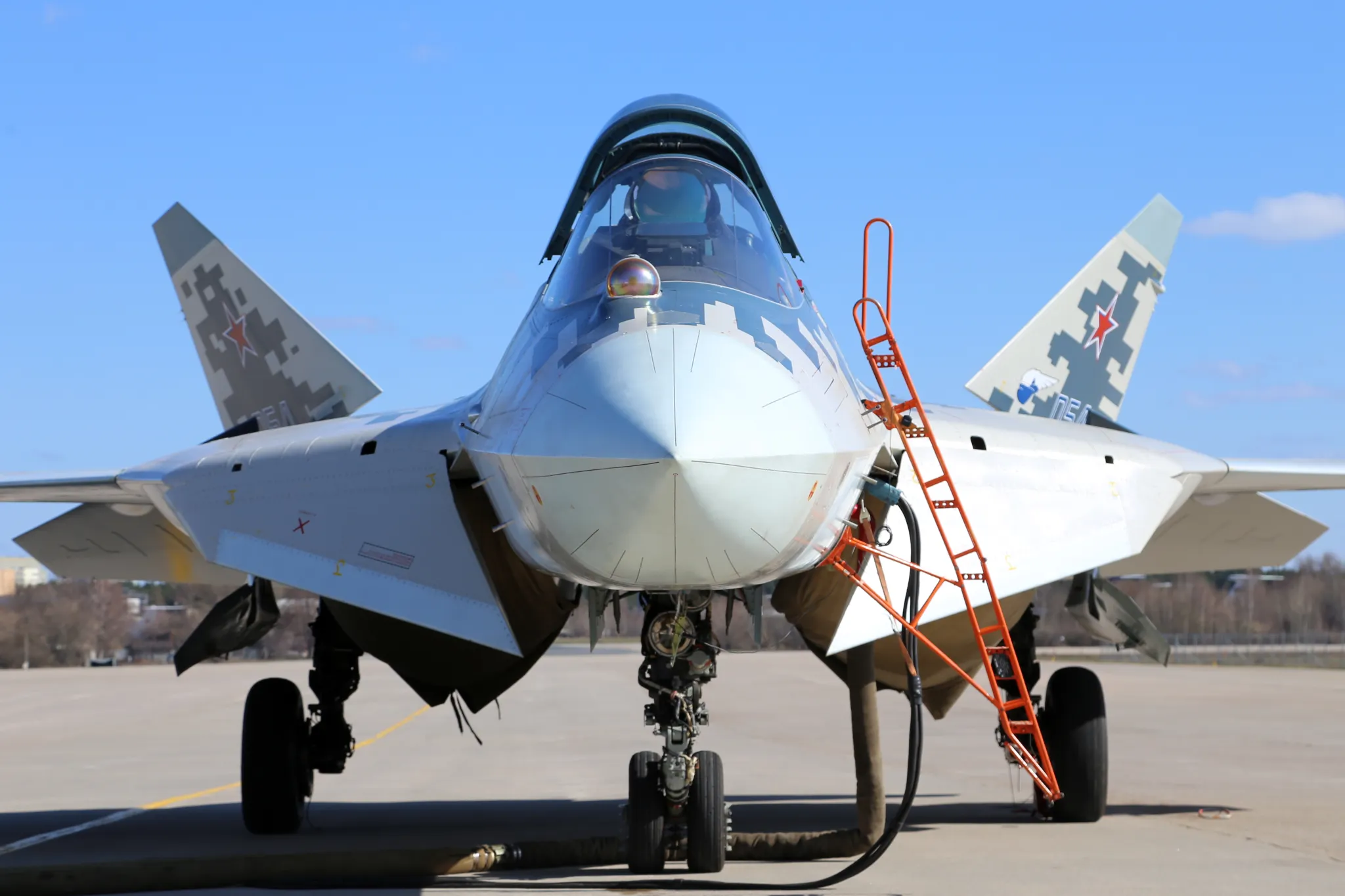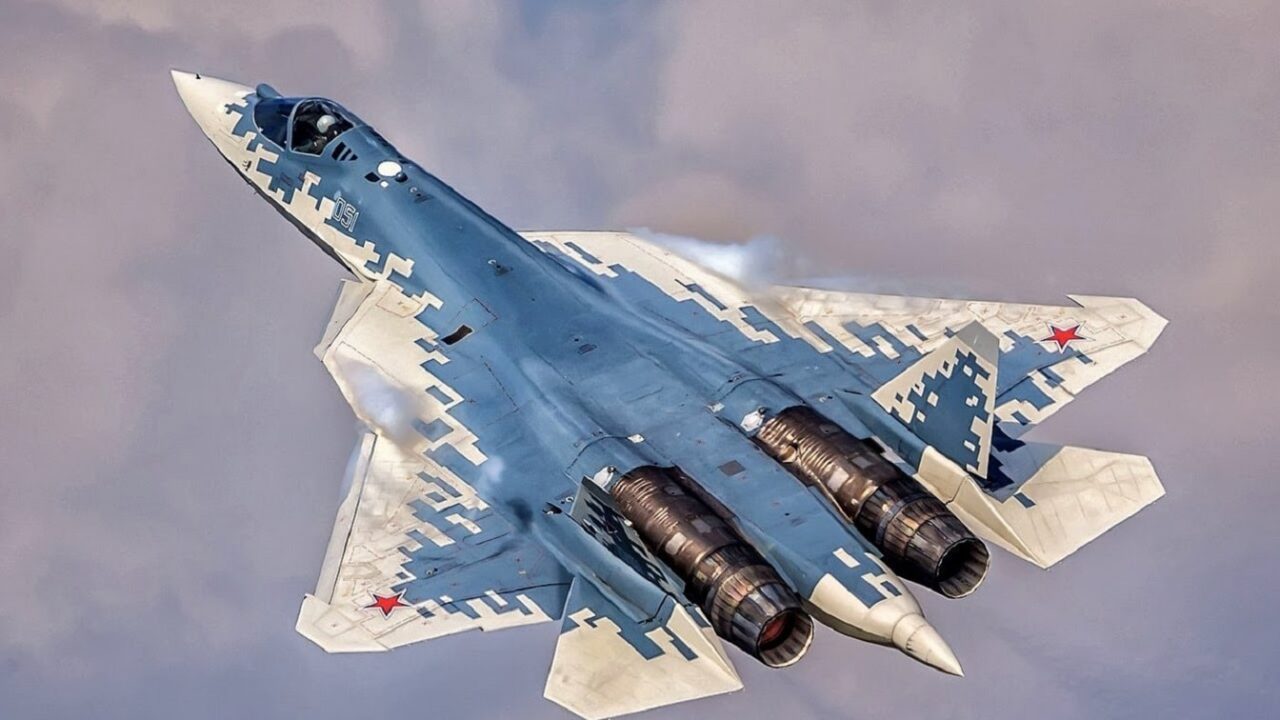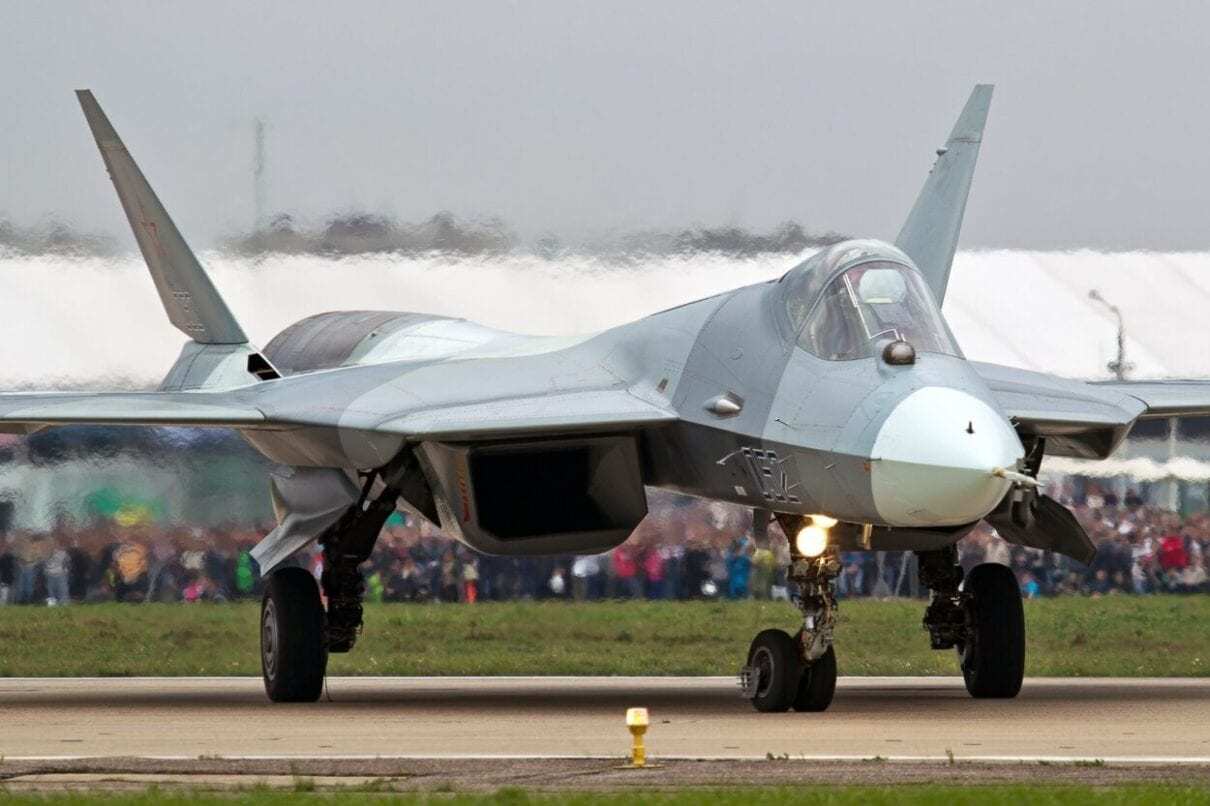Key points and summary: Russia’s Su-57 Feron, touted as a fifth-generation stealth fighter, suffers from significant shortcomings. Designed to replace the Su-27 and MiG-29, the Felon features advanced avionics, hypermobility, and a multipurpose platform.
– But stealth isn’t enough, with a radar signature reportedly 20 to 30 times larger than the F-22.
Due to development delays, a lack of funding, and a failed partnership with India, production will remain at just 4 to 15 units by 2025.
– The Su-57 can compete with Western fourth-generation fighters like the F-16, but its limited numbers and inferior stealth make it difficult to compete with the F-35 and F-22. cannot compete with the huge fleet of
Russian Su-57 Feron, not very stealthy and too few in number
The Russian Air Force takes pride in producing fast and highly maneuverable fighter aircraft, and the Su-57 Feron is no exception.
Say what you want about Russian manufacturing, but they certainly “make it pretty.”
Russia’s fifth-generation “stealth” fighter is a twin-engine multi-role aircraft developed by Sukhoi. Felon (codenamed by NATO) is capable of air combat, ground attack, and sea attack. The Su-57 incorporates stealth, super-maneuverability, super-cruise, integrated avionics, and large payload capacity.
The Russian Ministry of Defense designed and developed the Su-57 as a replacement for the Su-27 and MiG-29 fighters. Russia plans to eventually export the aircraft. But even after years of development, the Su-57’s biggest flaw remains financial.
The Russian economy is so bad that there are only a few operational Su-57s.
A brief explanation of the history and fatal flaws of the Su-57 Felon
In 1979, the Soviet military recognized the need for an aircraft that would serve as a versatile platform to replace the MiG-29 and Su-27 aircraft. He was called the “Fighter of the 90s.”
However, after the collapse of the Soviet Union in 1991, funding was so scarce that it was not until almost a decade later, in 2000, that the program began with its first prototype. Manufacturers developed various designs, but Russia, once again short on funds, looked for an international partner to help pay for the project.

Russian Su-57 stealth fighter. Image credit: Creative Commons.
In 2010, Russia and India signed a contract with Sukhoi and Hindustan Aeronautics Limited (HAL) to jointly develop a variant of the PAK FA called the Fifth Generation Fighter Aircraft (FGFA). It was expected to cost each country $6 billion and take eight to 10 years to develop.
But by 2014, cracks began to appear in this partnership. The Indian Air Force began to express concerns about performance, particularly stealth capabilities, cost, and work share. India withdrew from the partnership in 2018 after it was determined that the aircraft did not meet requirements.
The first flight took place in 2010, prior to India’s withdrawal. By 2013, Russia had built five prototypes, but the results were unsatisfactory. Stress cracks were already appearing in the aircraft frame. After redesign and testing, the aircraft is finally ready for mass production. The first plane to leave the production line crashed.
However, in 2019, Russian President Vladimir Putin announced a deal to purchase 76 Su-57s. As of January 2025, Russia has only 4 to 15 operational Su-57 aircraft. It’s not easy to get exact numbers because different sources give different numbers. This is clearly the real “fatal flaw” of the fighter.

Russian Su-57 Feron stealth fighter. Image credit: Creative Commons.
design and specs
Size: length 20.1m, wingspan 14.1m, height 4.6m
Weight: 18,500 kg empty, normal take-off weight 26,700 kg, maximum take-off weight 35,000 kg
Speed: Max speed Mach 2.45 at altitude, afterburner Mach 2
Range: 4,496 miles range
Service Cap: Service Cap 65,617 feet
Flight time: up to 5.8 hours
Weapon storage: internal armory and storage in small triangular compartments under the wings.
Radar: Active electronically scanned array radar and phased array radar Targeting: Infrared search and track targeting technology
Engine: 2 Saturn AL-41F1 afterburning turbofan engines
Armament: Various anti-ship, anti-aircraft and anti-armor missile configurations with 30 mm cannon under the nose and 8 hard points in the storage bay.
Is it really a stealth aircraft?
Russia promotes the Su-57 as a fifth-generation stealth aircraft. But while they are making serious attempts to become more “stealthy,” their radar signal is probably 20 to 30 times stronger than the F-22, says Alex Hollings of Airpower magazine.
Russia sent Su-57s to China in November for the 15th China International Aerospace Expo, but it was a huge public relations failure. Chinese social media, which is very pro-China and anti-Western, was quick to point out flaws in the Russian design.
Russia made the mistake of sending a prototype Feron instead of a mass-produced version. Meanwhile, China is trying to boost business for its own exports.

Russian Su-57 stealth fighter. Image: Creative Commons.
Is the Su-57 a good fighter? Yes, absolutely. While not a true fifth-generation stealth fighter, it is more than a match for the F-16 and F-15 in the inventory. And it will be possible to operate F-22s and F-35s commensurate with that amount of money. But the stealth capabilities and high-speed sensing and AI-enabled computing available to the F-35 are far superior.
And in terms of numbers? Even if Russia built 76 Ferons, it would be comparable to more than 1,000 U.S. and allied F-35s and 187 F-22s. That’s a no-win scenario for Russian aircraft. and they know it.
About the author:
Steve Balestrieri is a 19FortyFive national security columnist. He served as a U.S. Army Special Forces noncommissioned officer and warrant officer. In addition to writing for 19FortyFive, he covers the NFL for PatsFans.com and is a member of the Pro Football Writers of America (PFWA). His work was also regularly featured in other military publications.


